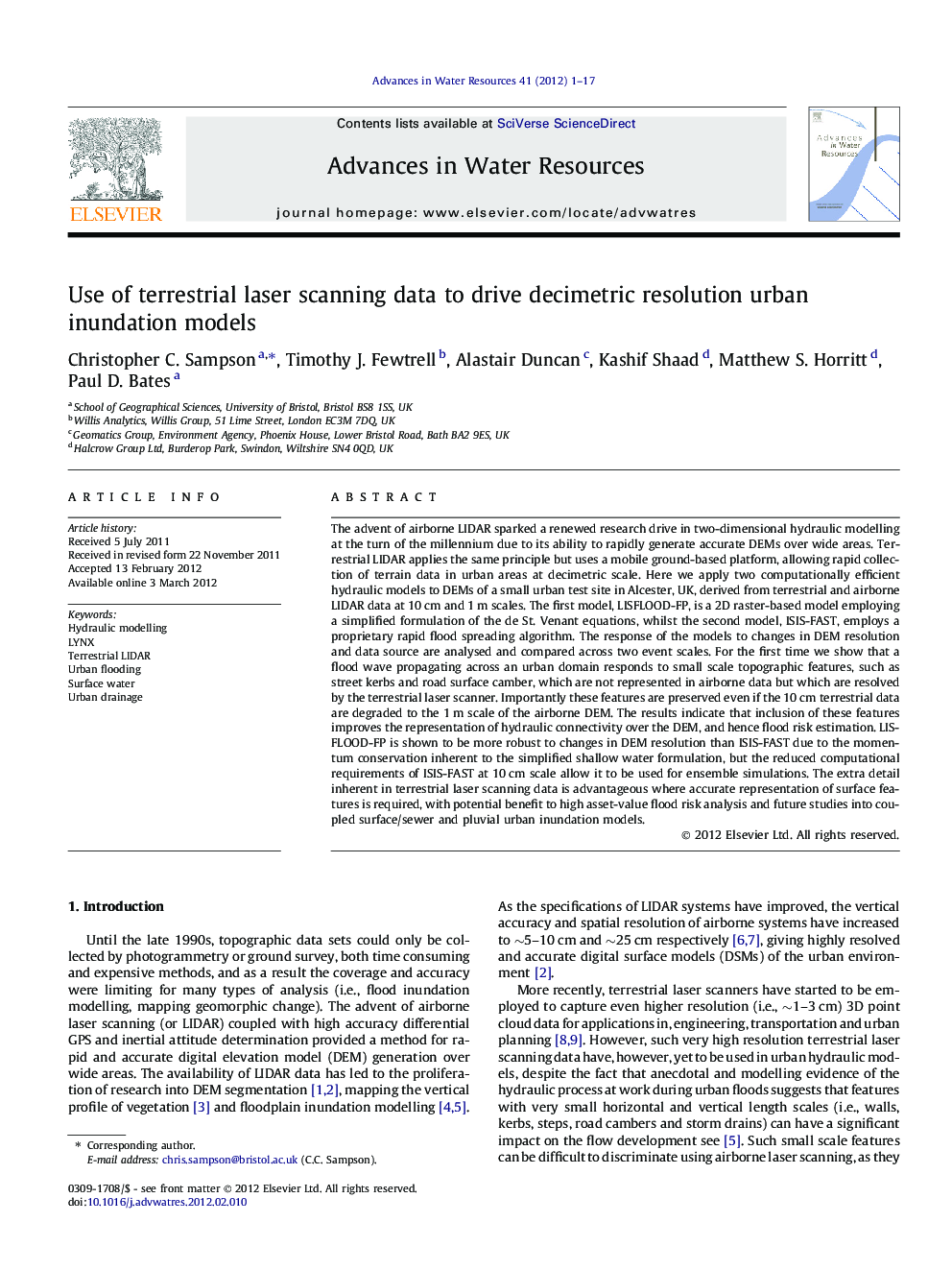| کد مقاله | کد نشریه | سال انتشار | مقاله انگلیسی | نسخه تمام متن |
|---|---|---|---|---|
| 4525895 | 1625667 | 2012 | 17 صفحه PDF | دانلود رایگان |

The advent of airborne LIDAR sparked a renewed research drive in two-dimensional hydraulic modelling at the turn of the millennium due to its ability to rapidly generate accurate DEMs over wide areas. Terrestrial LIDAR applies the same principle but uses a mobile ground-based platform, allowing rapid collection of terrain data in urban areas at decimetric scale. Here we apply two computationally efficient hydraulic models to DEMs of a small urban test site in Alcester, UK, derived from terrestrial and airborne LIDAR data at 10 cm and 1 m scales. The first model, LISFLOOD-FP, is a 2D raster-based model employing a simplified formulation of the de St. Venant equations, whilst the second model, ISIS-FAST, employs a proprietary rapid flood spreading algorithm. The response of the models to changes in DEM resolution and data source are analysed and compared across two event scales. For the first time we show that a flood wave propagating across an urban domain responds to small scale topographic features, such as street kerbs and road surface camber, which are not represented in airborne data but which are resolved by the terrestrial laser scanner. Importantly these features are preserved even if the 10 cm terrestrial data are degraded to the 1 m scale of the airborne DEM. The results indicate that inclusion of these features improves the representation of hydraulic connectivity over the DEM, and hence flood risk estimation. LISFLOOD-FP is shown to be more robust to changes in DEM resolution than ISIS-FAST due to the momentum conservation inherent to the simplified shallow water formulation, but the reduced computational requirements of ISIS-FAST at 10 cm scale allow it to be used for ensemble simulations. The extra detail inherent in terrestrial laser scanning data is advantageous where accurate representation of surface features is required, with potential benefit to high asset-value flood risk analysis and future studies into coupled surface/sewer and pluvial urban inundation models.
► Urban DEMs with spatial resolutions of 10 cm and 1 m are constructed using terrestrial LIDAR data.
► Inundation is simulated using a rapid flood spreading algorithm and a simplified 2D shallow water model.
► Hydraulic connectivity over the DEM is shown to be sensitive to small scale features captured by terrestrial LIDAR.
► The simplified shallow water model is more robust to changes in DEM resolution.
► The flood spreading algorithm provides a significant advantage in computational efficiency.
Journal: Advances in Water Resources - Volume 41, June 2012, Pages 1–17